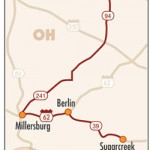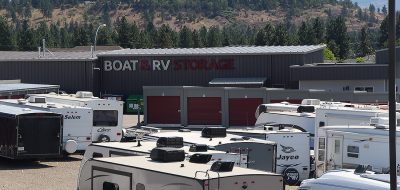 Recreational vehicles transport all our needs to provide both comfort and convenience to any chosen destination. This even includes items to adjust to the environment. Things like site leveling and shade. Leveling jacks make what was a sloped surface, livable and level. Shade offered by patio awnings can provide a cooler spot to eat, play or just relax.
Recreational vehicles transport all our needs to provide both comfort and convenience to any chosen destination. This even includes items to adjust to the environment. Things like site leveling and shade. Leveling jacks make what was a sloped surface, livable and level. Shade offered by patio awnings can provide a cooler spot to eat, play or just relax.
Today we will look at what’s available in awning choices for trailers, 5th wheels and motor homes. There are three general awning applications: door, window, and patio. The latter is the largest and by far the most popular. Yes, the patio awning is found on nearly every trailer and motorized recreational vehicle we see.
The patio awning, however, is found in two installation configurations; either fastened to the main body or attached to a slide or pop out. The type that is fixed to the main body is usually larger than that of a slide attached unit. This, in part, is due to it not being restricted to the size of the slide. Additionally, the main body installed types have more support than a slide mounted unit therefore can withstand more wind pressure. Both, however have trade-offs. Many of the main body installed awnings don’t work real well with slide equipped vehicles that have a slide directly under the awning. This not only reduces the shade provided but also may cause wear on the awning canvas where it touches the slide top. The slide mounted awnings are smaller and may be constructed lighter so as not to overload the slide. These also may demonstrate a more pronounced movement of the coach during gusty days caused by leverage the slide provides.
 There are then two more choices, manual or electric powered deployment. The manual are the most common and also are the most versatile and strong. These are available from a number of manufacturers, A & E, Dometic, Trim Line, etc. The electric powered patio awnings tend to have much lighter frames that are more affected by stronger winds than that of the manual. The degree of difference between a quality manual awning as apposed to a power unit is dependant on the canvas size and the make. Girard is, in my opinion, the best power awning available for a recreational vehicle. The only drawback is the cost. Girard awnings are one of the best and most expensive you may find. Rumor has it that Girard stands behind their warranty for an indefinite time. There are, however, other good choices in quality power awnings, such as Carefree of Colorado, A & E, WeatherPro, and others. All of these powered units generally come with automatic wind speed retraction of the awning. This is based on a user adjustable maximum wind speed calibration. The wind speed that is set trips the retract mode if the velocity reaches the preset value and maintains it for several seconds. This delay buffer avoids early retraction during brief wind gusts. These do work well on most, if not all, makes.
There are then two more choices, manual or electric powered deployment. The manual are the most common and also are the most versatile and strong. These are available from a number of manufacturers, A & E, Dometic, Trim Line, etc. The electric powered patio awnings tend to have much lighter frames that are more affected by stronger winds than that of the manual. The degree of difference between a quality manual awning as apposed to a power unit is dependant on the canvas size and the make. Girard is, in my opinion, the best power awning available for a recreational vehicle. The only drawback is the cost. Girard awnings are one of the best and most expensive you may find. Rumor has it that Girard stands behind their warranty for an indefinite time. There are, however, other good choices in quality power awnings, such as Carefree of Colorado, A & E, WeatherPro, and others. All of these powered units generally come with automatic wind speed retraction of the awning. This is based on a user adjustable maximum wind speed calibration. The wind speed that is set trips the retract mode if the velocity reaches the preset value and maintains it for several seconds. This delay buffer avoids early retraction during brief wind gusts. These do work well on most, if not all, makes.
The manual requires no electrical energy, as you would obviously guess. The majority of the powered awnings operate on 12 volt D.C. while some of the higher end lines, such as Girard, run on 120 volts A.C. The A.C. powered units are generally operated through an onboard inverter, thus alleviating the need for shore or generator power support. The use of the higher voltage substantially reduces the operating heat and the wire size required. This is due to the 120 VAC powered unit only requiring a tenth of the amperage to accomplish the job when compared to that of the 12 VDC model.
So, how do these work in the real world. Well, all work great, as far as shade is concerned, but what about wind? Most manual operated awnings provide an easy method to slope the canvas so as to run the rain off at a desired end. Additionally, they can be set up to endure strong winds in excess of 30 or 35 miles per hour. Powered awnings, on the other hand, can not easily be set to angle rain to a desired end and are subject to far more buffeting during wind events that are far below those endured by the manual type.
So, what type of awning would be the best to get? I suppose it depends on your individual needs and RV application. There are many campgrounds and geographic areas that are protected from wind, or wind gusts. These areas could support the use of either without significant challenges. But, there are also many areas that are subject to higher winds, or wind gusts, that may very well reduce the time that this awning can be used.
Okay, now all you have to do is check the material quality and the color. Some are solid colors, some faded, even striped or paterned. I guess the bottom line here is, just because it works spiffy-like, and costs more, may not mean it is the best for your application. On the other hand, a power model may be just what the doctor ordered. It’s all up to you, or more likely, your individual needs.
Bringing You A Shady View – Lug_Nut Peter Mercer







Pingback: raspberry ketones
Lug_Nut
Sid, I’m glad you found the article of interest. On my last coach, due to slide outs and general design, I often wished I would have ordered a manual awning instead of the light framed power one. I too travel in windy areas. Additionally, it seemed we had higher than normal winds this winter in the south. Thank you for your input on this topic.
Sid
Very good information!. We have a 5th wheel with slide and manual patio awnings that have worked very well for us but of late I have wondered about a powered patio awning. Given where we travel (say wind) and the information in your article I no longer wonder about power, I’ll stay were we are.
Thanks,
Sid
Lug_Nut
Hi John, I’m not aware of any specific regular service requirements with the Girard awnings. While there are many good awning makers out there, I believe Girard is one of the best. Thank you for you comments and your continued input.
John
Hi Lug_Nut,
A very informative article! Keep them coming. I’ve often heard that Girard awnings were the best and it’s a bonus to hear that they stand behind their product indefinitely. Cost is more but, in my opinion, worth the extra outlay.
Is there any service maintenance needed on the Girard’s mechanical components or are they maintenance free?
Cheers,
John